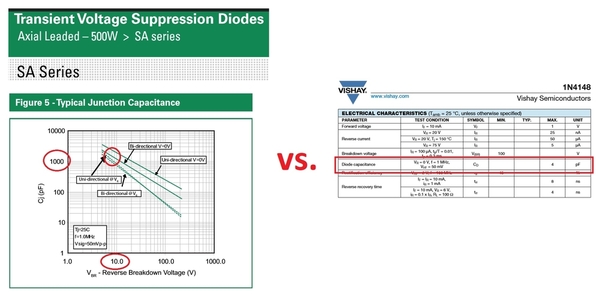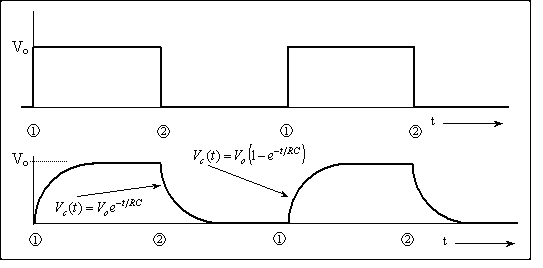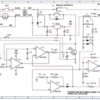gunrunnerjohn posted:Adrian! posted:gunrunnerjohn posted:I'm just wondering if there isn't a much simpler solution here. As far as the TVS, how about forgetting the silicon diodes and just putting one of the big honkin' 3kw TVS diodes right across the gates and dispense with the diodes. It'll take a much bigger beating than the 500W ones that you were testing with, and with the adapter board, it should be easy to piggyback on the existing ACT244. I'm thinking of something like this Littlefuse SMDJ7.0CA. Hard to believe it couldn't stand up to a fair amount of punishment. It's small enough to perch right on top of the ACT244 on a little PCB.
Uh some details. The scope is looking at the output side of the transformer, not the waveform right at the clamping device/ACT244 driver output pins. Clamping from 0 to 7 volts could work but again it's got to be quick quick quick. A small zener or TVS is faster than a big zener since Cj is the dominant term in the time constant which grows with anode area.
Maybe a small TVS in parallel with a big TVS?
I missed this in all the responses.
That's not a bad idea, I think I'd make the small TVS just a bit higher in voltage so that when the big one did clamp, it takes the stress off the smaller one. What do you think, a 500W one like you used and the 3000W one?
Any chance you could equip one of your TIU's with this combo since you have the ideal testbed? Or, maybe we can get Bob at NJ-HR to try this fix. If we can come up with a working fix that only has a couple of components, it would be easy to make the piggy-back board that could be plopped on top of the 244's.
I checked the 3000W one I specified, it has a pretty decent response time, and the added capacitance of the little board should be minimal if we do it right.
Fast response time: typically less than 1.0ps from 0V to BV min
I bet it'll work. You'd want a small split, maybe 9V big and 9.2V small... something like that.















